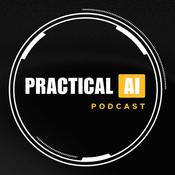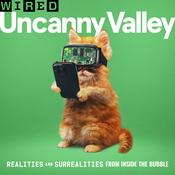591 episodes

Engineering for EBITDA and the Private Equity Playbook
2025/12/23 | 32 mins.
Joel Dolisy, CTO at WellSky, joins the podcast to reveal why organizational design is the ultimate "operating system" for scaling tech companies. This conversation is a deep dive into how engineering leaders must adapt their strategies when moving between the hyper growth of Venture Capital and the disciplined profitability of Private Equity.Building a high performing team is about much more than just hiring. Joel explains the necessity of maximizing the "multiplier effect" where the collective output far exceeds the sum of individual parts. We explore the pragmatic reality of digital transformation, the "art" of timing disruptive technology adoption like Generative AI, and how to use the Three Horizons framework to keep your core business stable while chasing the next big innovation. Whether you are leading a team of ten or an organization of hundreds, these insights on design principles and leadership context are essential for navigating the complexities of modern software delivery.Core InsightsShifting the perspective of software from a cost center to a core growth enabler is the fundamental requirement for any company aiming to be a true innovator.Private Equity environments require a specialized leadership approach because the "hold period" clock dictates when to prioritize aggressive growth versus EBITDA margin acceleration.Scaling successfully requires a "skeleton" of design principles, such as maintaining team sizes around eight people to ensure optimal communication flow and minimize overhead.The most critical role of a senior leader is providing constant context to the engineering org, ensuring teams understand the "why" behind shifting constraints as the company matures.Timestamped Highlights01:12 Defining the broad remit of a CTO from infrastructure and security to the unusual addition of UX.04:44 Treating your organizational structure as a living operating system that must be upgraded as you grow.10:07 Why innovation must include internal efficiency gains to free up resources for new revenue streams.15:01 Navigating the massive waves of disruption from the internet to mobile and now large language models.23:11 The tactical differences in funding engineering efforts during a five to seven year Private Equity hold period.28:57 Applying Team Topologies to create clear responsibilities across platform, feature, and enablement teams.Words to Lead By"You are trying to optimize what a set of people can do together to create bigger and greater things than the sum of the individual parts there".Expert Tactics for Tech LeadersWhen evaluating new technology like AI, Joel suggests looking at the "adoption curve compression". Unlike the mid nineties when businesses had a decade to figure out the internet, the window to integrate modern disruptors is shrinking. Leaders should use the Three Horizons framework to move dollars from the core business (Horizon 1) to speculative innovation (Horizon 3) without making knee jerk reactions based solely on hype.Join the ConversationIf you found these insights on organizational design helpful, please subscribe to the show on your favorite platform and share this episode with a fellow engineering leader. You can also connect with Joel Dolisy on LinkedIn to keep up with his latest thoughts on healthcare technology and leadership.

Why Your AI Strategy Will Fail Without A Business Plan
2025/12/22 | 24 mins.
Stop chasing shiny objects and start driving real business outcomes. Marathon Health CTO Venkat Chittoor joins the show to explain why AI is the ultimate enabler for digital transformation but only when it is anchored by a rock solid business strategy. Essential Insights for Tech LeadersAI is not a standalone strategy. It is a powerful tool to accelerate a pre-existing business North Star. Success in digital transformation follows a specific maturity curve. Start with personal productivity, move to replacing mundane tasks, and eventually aim for cognitive automation. Governance must come before experimentation. Establishing guardrails for data privacy is critical before launching any AI pilot. Measure value through tangible efficiency gains. In healthcare, this means reducing administrative burden or "pajama time" so providers can focus on patient care. Don't let marketing speak fool you. Always validate vendor claims against your specific industry use cases. Timestamped Highlights00:50 Defining advanced primary care and the mission of Marathon Health 02:44 Why AI strategy is useless without a defined business strategy 05:01 The three steps of AI adoption from productivity to cognition 12:14 How to define success metrics for a pilot versus a scaled V1 solution 16:40 Real world ROI including call deflections and charting efficiency 21:43 Advice for leaders on data quality and avoiding vendor traps A Perspective to CarryAI is actually enabling [efficiency], but without a solid business strategy, AI strategy is not useful. Tactical Advice for the FieldWhen launching an AI initiative, focus heavily on the underlying data quality. Ensure your team accounts for data recency, accuracy, and potential biases, as these factors determine whether an experiment succeeds or fails. Start small with pilots to build muscle memory before attempting to scale complex systems. Join the ConversationIf you found these insights helpful, subscribe to the podcast for more deep dives into the tech landscape. You can also connect with Venkat Chittoor on LinkedIn to follow his work in healthcare innovation.

Data Governance for Growth: Moving Beyond Compliance
2025/12/19 | 20 mins.
Stop treating data governance as a "data cop" function and start using it as a high ROI offensive weapon. In this episode, Peter Kapur, Head of Data Governance and Data Quality at CarMax, breaks down how to move beyond defensive compliance to drive profitability, customer experience, and better data science outcomes.Critical Insights for LeadersShift from defense to offense Data defense covers the mandatory regulatory and legal requirements like privacy and cybersecurity. Data offense involves everything else that hits your bottom line, such as investing in data quality to save or make money.Prioritize problems over frameworks Avoid bringing rigid policies and "data geek" terminology to business leaders. Instead, spend time listening to their specific data struggles and apply governance capabilities as solutions to those problems.Data quality makes governance tangible Without high quality data, governance is just a collection of abstract policies. Improving data quality empowers data scientists to produce better models and gives analytics teams the ability to discover and trust their data.Key Moments in the Conversation02:41 Defining the clear line between defensive regulation and offensive growth 06:03 Why data quality and data governance must sit together to be effective 11:00 Shifting from "data school" to "business school" to communicate value 13:12 Quantifying the ROI of data governance through customer wins and time savings 18:35 Actionable advice for starting an offensive strategy from scratch Wisdom from the Episode"If we meet the laws, we meet the regulations, we meet the legal, how do we leverage our data? It is a mindset shift versus, let me lock my data down, no one use it." Tactical Advice for ImplementationEnsure adoption through personalization Design tools and processes that are personalized to specific roles so they feel like a natural part of the workflow rather than a burden.Focus on the eye of the consumer Treat every person in the organization as a "data citizen" and remember that data quality is ultimately defined by the needs of the people consuming it.Join the ConversationSubscribe to the podcast on your favorite platform to catch every episode. Follow us on LinkedIn to stay updated on the latest trends in data leadership.

Stop Pushing Products and Start Predicting Intent
2025/12/18 | 27 mins.
Afrooz Ansaripour, Director of Data Science at Walmart, joins the show to explain how global leaders are shifting from simple historical tracking to predicting psychological triggers and customer intent. This episode explores the evolution of customer intelligence and how Generative AI is turning massive data sets into personalized, value driven experiences. Listeners will learn how to balance hyper personalization with foundational privacy to build lasting consumer trust.Key InsightsPredict intent rather than just reporting past transactions to understand why a customer is with the brand.Use Generative AI as an explainability layer to transform complex data platforms from black boxes into conversational tools.Prioritize customer trust as a critical part of the user experience rather than just a legal requirement.Integrate digital and physical signals to create a 360 degree view that reveals insights which would otherwise be invisible.Focus on rapid technology adoption and curiosity as the primary drivers of success in modern AI teams.Timestamped Highlights01:51 Identifying the challenges and opportunities when managing millions of real time signals.06:43 Strategies for showing genuine value to the customer without making them feel like just a part of a sale.09:51 How LLMs are fundamentally changing the way data teams interpret unstructured feedback and behavioral patterns.14:42 Managing privacy and ethical data practices while building personalized conversational AI.19:14 Stitching together the online and offline journey to create a seamless customer experience.22:52 The necessary evolution of data science skills toward storytelling and execution bias.A Powerful Thought"Personalization should never come at the expense of customer trust." Tactical StepsCombat the garbage in garbage out problem by refining cleaning processes to handle modern AI requirements.Build an interactive layer or chatbot on top of data products to make insights instantly accessible and automated.Translate technical insights into real world decisions to ensure customers actually benefit from data models.Next StepsSubscribe to the show for more insights into the future of tech. Share this episode with a peer who is currently navigating the complexities of customer data.

The Real Bottleneck in Healthcare AI Is Data Access
2025/12/17 | 35 mins.
Shahryar Qadri, CTO of OneImaging, joins me to unpack a hard truth about healthcare tech: the goal is not to remove humans, it is to give them more room to be human.We talk about where cost “optimization” actually helps patients, why radiology is a perfect fit for AI but still held back by data access, and how better workflows can improve trust, speed, and outcomes without losing the human touch.OneImaging sits in the radiology benefits space, helping members book imaging in a national network with more transparency and a high touch booking experience, while helping employers cut imaging costs significantly.Key takeaways• The “human touch” in healthcare is not going away, the better play is using tech to increase capacity so caregivers can spend more time being caregivers• Cost optimization is not always about paying less for expertise, it is often about wasting less human time, improving trust, and removing friction around services• Healthcare still runs on outdated plumbing in places you would not expect, including fax based workflows that slow everything down• Radiology is one of the best real world use cases for AI, but the bigger blocker is getting access to imaging data in usable form, not model capability• Your health data is already “there”, but it is not working for you yet. The next wave is tools that scan your longitudinal record and surface what to ask your doctor about, so you can be a stronger advocate for your own careTimestamped highlights• 00:36 What OneImaging actually does, and why “transparent imaging” is more than a pricing story• 02:00 Why healthcare stays personal, and how tech should increase capacity instead of replacing care• 03:36 The real definition of cost optimization, commodity versus service, and where trust matters• 07:01 The surprising reality of imaging ops, why it still feels like 1998, and what gets digitized next• 17:19 AI in radiology is real, but the data access and interoperability gap is the bottleneck• 24:21 Your CDs are full of value, the problem is we do almost nothing with that data todayA line worth replaying“These LLM models are the worst that they’ll ever be today. They’re only going to get better and better and better.”Call to actionIf this episode sparked a new way of thinking about healthcare tech, follow The Tech Trek on your podcast app, share it with a friend in product or engineering, and connect with me on LinkedIn for more conversations like this.
More Technology podcasts
Trending Technology podcasts
About The Tech Trek
Listen to The Tech Trek, The a16z Show and many other podcasts from around the world with the radio.net app

Get the free radio.net app
- Stations and podcasts to bookmark
- Stream via Wi-Fi or Bluetooth
- Supports Carplay & Android Auto
- Many other app features
Get the free radio.net app
- Stations and podcasts to bookmark
- Stream via Wi-Fi or Bluetooth
- Supports Carplay & Android Auto
- Many other app features


The Tech Trek
download the app,
start listening.





































